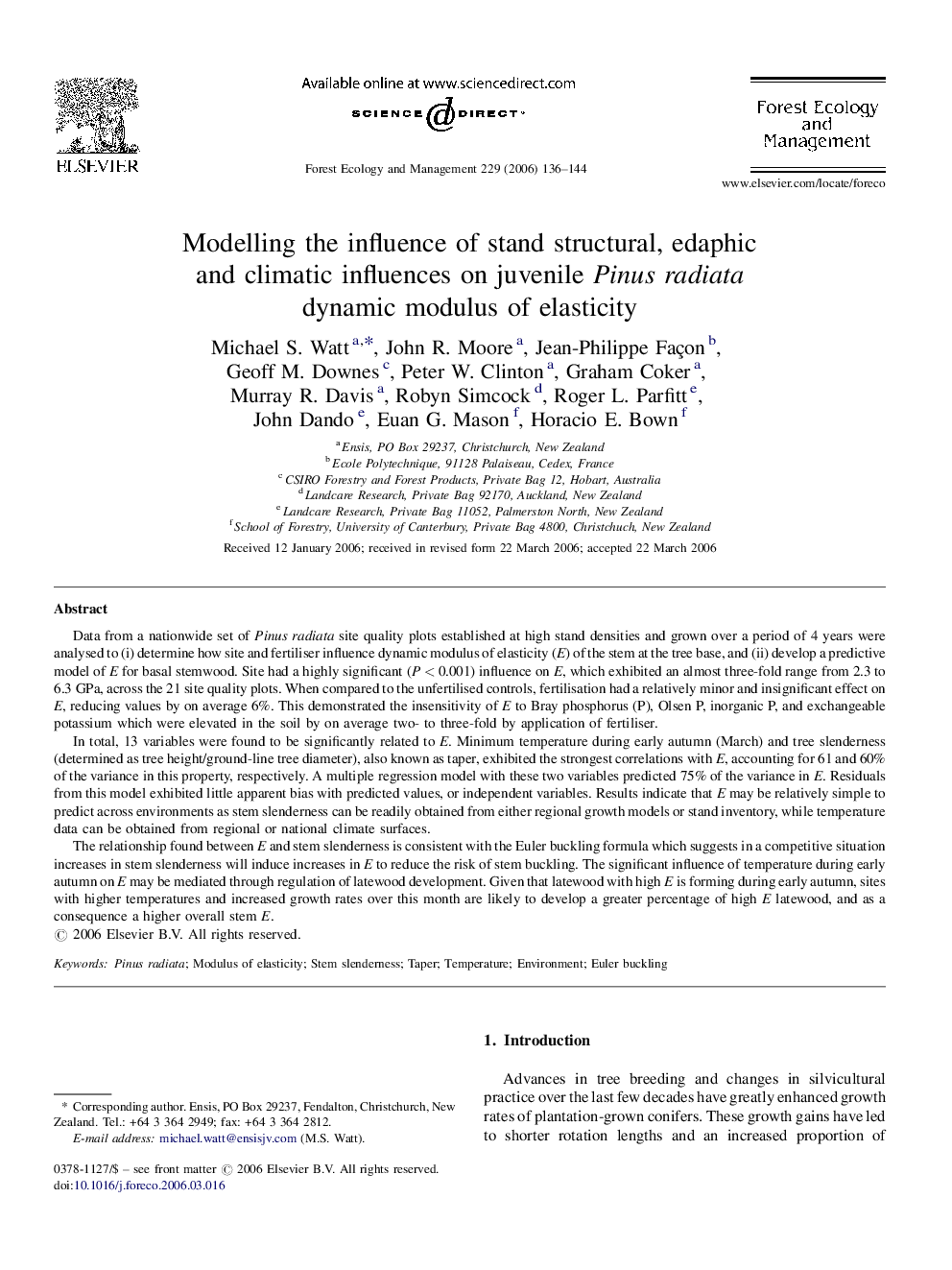| کد مقاله | کد نشریه | سال انتشار | مقاله انگلیسی | نسخه تمام متن |
|---|---|---|---|---|
| 90832 | 159403 | 2006 | 9 صفحه PDF | دانلود رایگان |

Data from a nationwide set of Pinus radiata site quality plots established at high stand densities and grown over a period of 4 years were analysed to (i) determine how site and fertiliser influence dynamic modulus of elasticity (E) of the stem at the tree base, and (ii) develop a predictive model of E for basal stemwood. Site had a highly significant (P < 0.001) influence on E, which exhibited an almost three-fold range from 2.3 to 6.3 GPa, across the 21 site quality plots. When compared to the unfertilised controls, fertilisation had a relatively minor and insignificant effect on E, reducing values by on average 6%. This demonstrated the insensitivity of E to Bray phosphorus (P), Olsen P, inorganic P, and exchangeable potassium which were elevated in the soil by on average two- to three-fold by application of fertiliser.In total, 13 variables were found to be significantly related to E. Minimum temperature during early autumn (March) and tree slenderness (determined as tree height/ground-line tree diameter), also known as taper, exhibited the strongest correlations with E, accounting for 61 and 60% of the variance in this property, respectively. A multiple regression model with these two variables predicted 75% of the variance in E. Residuals from this model exhibited little apparent bias with predicted values, or independent variables. Results indicate that E may be relatively simple to predict across environments as stem slenderness can be readily obtained from either regional growth models or stand inventory, while temperature data can be obtained from regional or national climate surfaces.The relationship found between E and stem slenderness is consistent with the Euler buckling formula which suggests in a competitive situation increases in stem slenderness will induce increases in E to reduce the risk of stem buckling. The significant influence of temperature during early autumn on E may be mediated through regulation of latewood development. Given that latewood with high E is forming during early autumn, sites with higher temperatures and increased growth rates over this month are likely to develop a greater percentage of high E latewood, and as a consequence a higher overall stem E.
Journal: Forest Ecology and Management - Volume 229, Issues 1–3, 1 July 2006, Pages 136–144